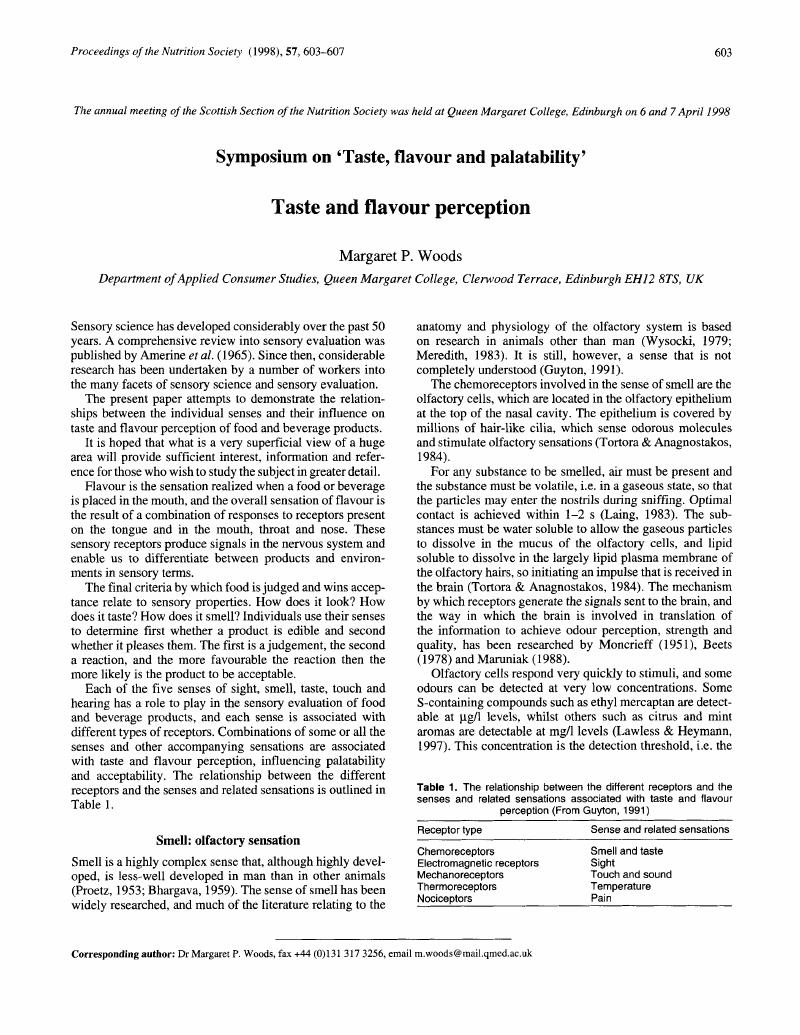Crossref Citations
This article has been cited by the following publications. This list is generated based on data provided by Crossref.
Henry, C. Jeya K.
Woo, Jean
Lightowler, Helen J.
Yip, Ricky
Lee, Roselle
Hui, Elsie
Shing, Sandra
and
Seyoum, Teodros A.
2003.
Use of natural food flavours to increase food and nutrient intakes in hospitalized elderly in Hong Kong.
International Journal of Food Sciences and Nutrition,
Vol. 54,
Issue. 4,
p.
321.
Markovic, Slobodan
and
Vulin, Jelena
2008.
The structure of olfactory experience.
Psihologija,
Vol. 41,
Issue. 1,
p.
21.
LEIGHTON, C.S.
SCHÖNFELDT, H.C.
and
KRUGER, R.
2010.
QUANTITATIVE DESCRIPTIVE SENSORY ANALYSIS OF FIVE DIFFERENT CULTIVARS OF SWEET POTATO TO DETERMINE SENSORY AND TEXTURAL PROFILES.
Journal of Sensory Studies,
Vol. 25,
Issue. 1,
p.
2.
Kuczmarski, Marie Fanelli
and
Jones, Elisabeth M.
2012.
The Spice Kitchen: Apprenticeship Training in Culinary Skills.
Creative Education,
Vol. 03,
Issue. 08,
p.
1390.
Ayari, Besma
Landoulsi, Ahmed
and
Soussi-Yanicostas, Nadia
2012.
Localization and characterization of kal 1.a and kal 1.b in the brain of adult zebrafish (Danio rerio).
Brain Research Bulletin,
Vol. 88,
Issue. 4,
p.
345.
Zakaria, Nur
Masnan, Maz
Zakaria, Ammar
and
Shakaff, Ali
2014.
A Bio-Inspired Herbal Tea Flavour Assessment Technique.
Sensors,
Vol. 14,
Issue. 7,
p.
12233.
2015.
Sensory Adjectives in the Discourse of Food.
Vol. 16,
Issue. ,
Wise, Kimber
Luo, Jiaqiang
Howell, Kate
and
Selby-Pham, Jamie
2023.
Prediction of Shiraz wine flavour from volatile and odour intensity profiles.
Journal of Wine Research,
Vol. 34,
Issue. 4,
p.
317.





